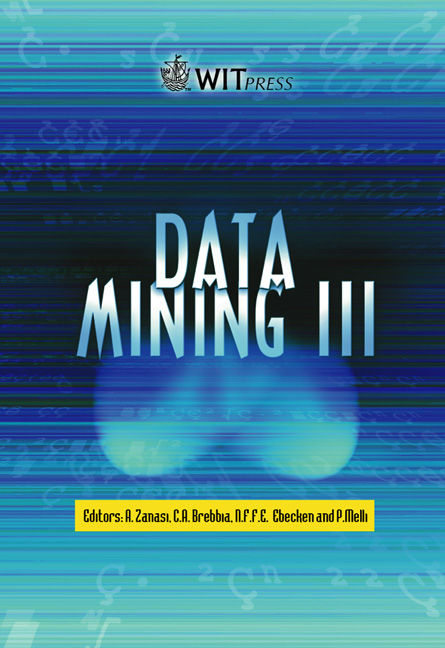Knowledge Discovery In Textile Field – Analysis Of A Cotton Fibre Properties Database
Price
Free (open access)
Volume
28
Pages
Published
2002
Size
1112 kb
Paper DOI
10.2495/DATA020231
Copyright
WIT Press
Author(s)
S Dias, R Vasconcelos, M Santos, T Amorim & L Amaral
Abstract
In the last years, great developments in technology have taken place in certain branches of testing procedures in the textile field. Measures like micronaire, length, uniformity, strength, elongation, CO1OWand trash contents are determined easily using the High Volume Instrument Systems (HVI), providing rapid and reliable results. With the USTER AFIS (another measurement system), the user is in a position to carry out a process control with regard to the variation of fibre parameters such as the fibre length, the nep and the trash content. However, cotton chemical properties are obtained using laboratory methods that are more expensive and time consuming. This knowledge is very important because chemical properties can affect wet processes. In order to find some relation between these properties, so we can predict chemical properties from physical properties, we collect a large amount of data acquired in a HVI classification system. United States Department of Agriculture (USDA) HVI calibration of cotton, laboratory conditions, and sample conditioning practices and procedures were used in the test. Several studies were made relating, physical properties and yarn characteristics, physical properties between each others or between instruments used to measure cotton quality. All of these studies used statistical tools to achieve those relations. This paper shows the results of a study, using Data Mining techniques, resulting from a research project named Cotton Properties: Inference through Data Mining Techniques funded by Science and Technology Foundation of the Portuguese government. This paper describes the use of Clementine in the analysis of a database storing physical and chemical properties of cotton fibres. Through the application of several techniques it is possible to produce different kinds of knowledge. In this work the use of Neural Networks, Association Rules and Rule Induction is made in order to fmd relationships in the available data.
Keywords





